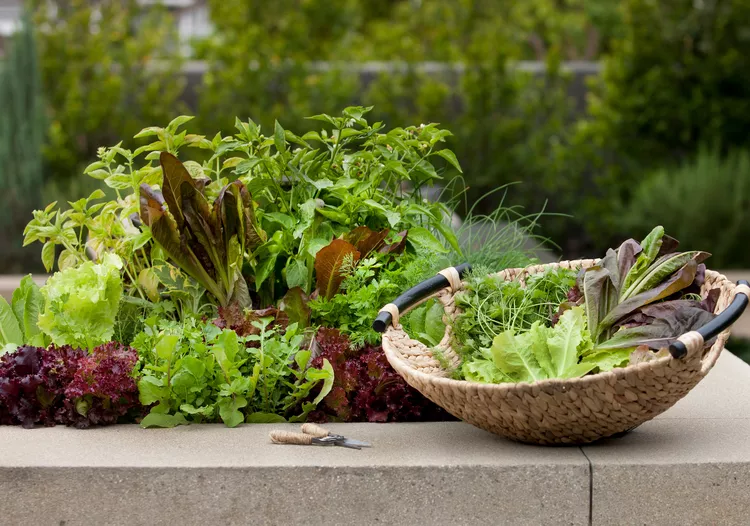Growing lettuce in your garden is one of the best ways to get the freshest greens to eat, but there are a few tricks to know about how to harvest lettuce properly. There is no wrong time to harvest lettuces. You can eat the leaves at almost any stage of growth, so you don't need to worry about picking lettuce before it’s ripe.
There are also ways to harvest lettuce that encourage it to produce even more sweet, tender leaves for salads and wraps. These simple tips for harvesting leaf lettuce and head lettuce will help you get the most out of your plants.
1. Cut Leaves Periodically
If you are growing leaf lettuce, such as oak leaf lettuce, mesclun, and green and red leaf lettuce, you can cut a few leaves off the plants every few days for the entire season, keeping yourself supplied with a steady stream of garden-fresh greens for salads. After the plant has at least six leaves, snip the outer one or two leaves from each lettuce. Don’t cut more than a third of the plant so it can continue to produce more leaves.
Head lettuce does not regrow leaves if you use the cut-and-come-again method.
2. Take Only the Outer Leaves
Snip off only the outer leaves on leaf lettuce plants. These are the largest leaves that have been growing on the plant the longest. Leave the smaller, younger leaves on the plant to give energy to the newest part of the plant, which will keep putting out new, edible foliage. This encourages the plant to grow more leaves.
3. Harvest Leaves from Multiple Plants
Don’t take too many leaves from a single leaf lettuce plant at one time. Take two or three leaves off each plant, leaving it strong enough to continue growing more leaves. This will ensuring a steady supply of lettuce throughout the growing season.
4. Cut the Entire Head
Harvest entire heads of romaine, buttercrunch, iceberg, or Boston lettuce by cutting off the base of the plant with scissors, pruners, a sharp knife, or a hori hori knife. Pull off the leaves one by one, rinse the lettuce under cool water, then use in a salad or wrap. Or you can keep the lettuce leaves in a plastic bag in the fridge for a few days if you aren't ready to use them right away.
You can pull a whole lettuce plant out by the roots, rinse off the soil, and place it root-down into a bowl of water in the refrigerator to keep it crisp until you are ready to use it.
5. Harvest Lettuce in the Morning
The water levels in lettuce leaves are at their highest in the morning before the sun starts beating down on the plants. Aim to harvest lettuce during the cooler morning hours for maximum crispness. The sun and heat cause the lettuce leaves to release water throughout the day, so an evening harvest yields less crisp leaves.
6. Harvest Lettuce Before It Bolts
When lettuce reaches the end of its growing cycle or the weather gets too hot, it bolts. This just means the stem will begin stretching upward as the plant begins making flowers and seeds instead of new leaves. Once lettuce plants do this, the leaves it does have become bitter and the stems get tough.




















